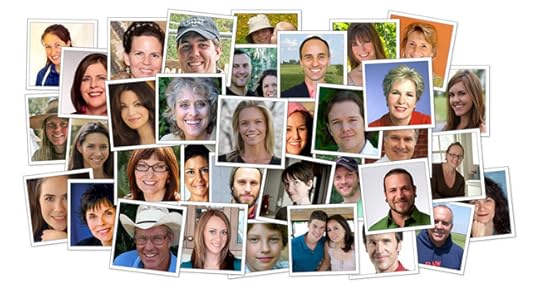Diane Sanfilippo's Blog, page 71
March 21, 2013
Podcast Episode #79: The Hormone Cure with Dr. Sara Gottfried, pt 1

Remember – If you’re enjoying these podcasts, please leave us a review in iTunes. Thanks!
Episode #79: “The Hormone Cure” with Dr. Sara Gottfried, pt 1
We’ll have part 2 with Dr. Gottfried next week!
Check out Dr. Gottfried’s website here.
In this episode we had chat with The Hormone Cure author Dr. Sara Gottfried about her new book and so much more! This show was so great that we’re going to have Dr. Gottfried back on for a part 2 in the near future.
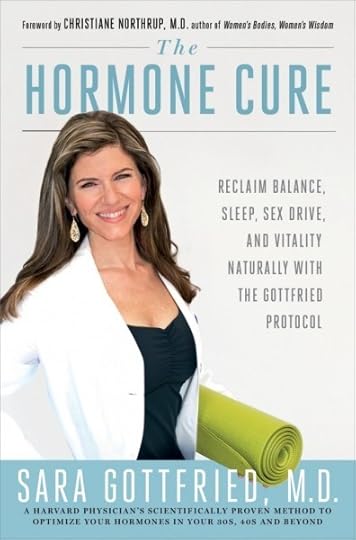 We covered some great topics including:
We covered some great topics including:
All paths lead back to cortisol.
Dr. Gottfried’s great grandmother who inspired this journey… she was a “Paleoista”
Women trying to do it all – the major downfall of our health
There’s a time and a place for caffeine – why/how are you using it? Tuning in to our bodies and realizing if we are using it “medicinally” or not
Yoga (or other similar activities) – the importance of it in balancing our lives
Master hormones for women: Cortisol – Thyroid – Estrogen, Men: Cortisol – Testosterone – Thyroid
Formulate 5 strategies to address your cortisol issues!
Who needs to hit the pause button
Ways to work on supporting your own cortisol right now:
Tiara time (15 mins, 4x/week)
Sexual stimulation
Nutrition – kicking sugar out to create a good neighborhood in your body
Phosphatidylserine
Omega 3
When women are more likely to experience low thyroid issues (two specific times in life)
Go-Go-Go, Androgens, and PCOS
Catabolic vs anabolic hormones
Oral contraceptives – how it affects us and for how long
The importance of testosterone levels in women
Dr. Gottfried’s recommendations for birth control
Rogue facial hair on women
Get your copy of Dr. Gottfried’s awesome book, The Hormone Cure.
Click here to download this episode as an MP3.
The episodes are currently available in iTunes, Stitcher & Blog Talk Radio.

Click here to submit questions.
Cheers!
Diane & Liz
March 20, 2013
FAQs: What is Paleo?
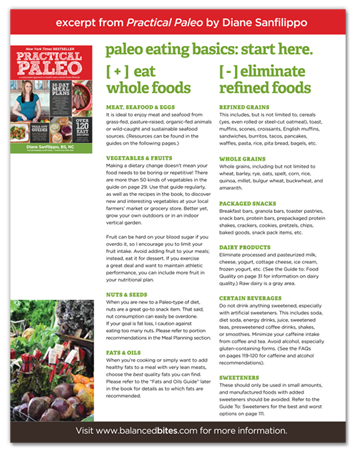
While the term “Paleo” has gained traction in the mainstream media and on bookstore shelves everywhere due to the improved health of those who follow the lifestyle, you could call it “Primal,” “Grain-Free,” “Real Food,” “Whole Food,” “Nutrient-Dense,” or “Ancestral.”
Whatever name you choose, the “Paleo” way of eating is simple: Mimic our ancestors, who suffered from fewer chronic diseases than modern populations. This doesn’t mean that you’ll recreate a caveman’s food landscape, of course. Our food supply and our environment are different from our ancestors, so we must adapt as new information comes to light.
Click here to download the Paleo Eating Basics PDF.
My approach to explaining a Paleo type of diet is less about demonizing the foods we look to avoid (grains, legumes, pasteurized dairy, and refined foods) and more about helping you to understand how food should work in your body.
 I also think it’s important to look beyond the notion of Is it Paleo? and consider including traditional foods that add deep value in nutritional content – foods like organ meats, broths, fermented vegetables and other goodies, and fermented cod liver oil.
I also think it’s important to look beyond the notion of Is it Paleo? and consider including traditional foods that add deep value in nutritional content – foods like organ meats, broths, fermented vegetables and other goodies, and fermented cod liver oil.
Once you know how your body should be working with your daily dietary inputs, evaluating if that is in fact happening is the next step. If you are not digesting food well and your blood sugar regulation is off, then eliminating specific foods (as outlined below) is my recommendation as to how to get it working properly. In my book, I get into a lot more detail on how digestion and blood sugar regulation should work, and how you know if they’re not – but I imagine most of you reading this are at least somewhat aware of how both of those situations feel.
From my perspective, the Paleo lifestyle is most importantly about:
1 – eating whole foods that provide optimal, nutrient-dense fuel for your body and
2 – avoiding processed, refined, nutrient-poor factory foods.
This means avoiding grains, legumes (beans), refined sugar, and pasteurized dairy products.
People believe eating whole foods is hard and limiting, but it isn’t. It may be an adjustment at first, but it’s simply a matter of eliminating foods that don’t promote health in your body. Though making these changes can be confusing and a bit difficult at first. Trust me, it gets easier!
Once you’ve tackled basic food choices, it is critical to make sure you maintain proper digestive function and blood sugar regulation, then to understand what to do to reach your own personal health goals.
Paleo is not a one-size-fits-all approach, but it’s a way of eating that is appropriate for all human animals. In other words, you are a human animal, so there is a Paleo “plan” that is right for you.
Making paleo work for you
 Before you can land on the best nutritional plan for you, it’s important to understand the basic principles behind this ancestral, real-food way of eating.
Before you can land on the best nutritional plan for you, it’s important to understand the basic principles behind this ancestral, real-food way of eating.
1. Eat whole foods.
If a food is not in its whole, natural form, chances are that it has been refined and is a less than optimal choice. When we intellectualize our diet and remove ourselves, as human animals, from the complex web that defines nature, we fight against our birthright of health. When you eat food as provided by nature, it actually promotes health, healing, and immunity against future ailments.
2. Avoid modern, processed, and refined foods.
These include grains, pasteurized dairy products, industrial seed oils (like corn, cottonseed, soybean, canola, or rapeseed), and artificial or refined sugar and sweeteners—especially high fructose corn syrup. If it has to pass through a factory before it is edible for you, reconsider whether or not it is actually food. More likely, it is an “edible product” or “food-like-substance.”
3. Eat to maintain proper digestive function.
Your requirements for digestive function may be different from someone else depending on your constitution. Essentially, you must determine which foods your body cannot tolerate and stop eating them. For example, some people can tolerate dairy, or the occasional grain-based foods. When you experience symptoms of food intolerances, it is your body’s way of telling you that you are disrupting your digestion.
Why is it so critical not to disrupt digestion?
The ability to fight chronic, and even acute, disease states begins in the digestive system (the gut).
Sixty to eighty percent of the immune system is within the gut.
There is immune tissue that follows the entire length of your small intestine. You’ll learn more than you ever thought you needed to know about this in the digestion and leaky gut sections of my book. If your body constantly suffers from digestive irritation, you set the stage for suppressed immune function in all other areas. This can result in a condition as innocuous as seasonal allergies or a problem that is much more aggressive like diverticulitis, eczema, psoriasis, or a number of inflammatory and autoimmune conditions.
4. Eat to maintain proper blood sugar regulation.
The amount of time it takes before your hunger kicks in again after a meal and how you feel (besides hungry) entering into your next meal are critical signs of how well your blood sugar levels are managed. If you’re hungry and eating every two to three hours and feeling shaky, weak, or starving entering into each meal or snack, you are probably not eating the right balance of food for you.
Figuring out how much protein, fat, and “good carbs” you should eat will help you to maintain well-balanced blood sugar throughout the day while comfortably eating roughly every four to six hours.
5. Follow a plan that will help you reach your own personal health goals.
People often ask me if I think a Paleo diet is right for everyone. Since Paleo is about is eating healthy food and avoiding unhealthy food — i.e., eating whole foods as opposed to refined foods—then, yes, I think it’s 100% right for everyone. Still, it would be a huge misstep to say that we can and should all eat exactly the same foods.
Does that mean you can try to create a nutritional plan based on what your specific ancestors ate?
 If your bloodline is 100% pure, you could try, but it would still be challenging to find the same foods that were eaten so long ago. Most of us, at least in the United States, are a mixture of different bloodlines from around the world, so it would be impossible to trace the diet of our ancestors.
If your bloodline is 100% pure, you could try, but it would still be challenging to find the same foods that were eaten so long ago. Most of us, at least in the United States, are a mixture of different bloodlines from around the world, so it would be impossible to trace the diet of our ancestors.
Instead, the Paleo concept is based on estimations of what humans of past generations would have eaten, as well as the nutritional and dietary history in many parts of the world.
We can guess what different animal and plant foods would have been available in different climates on different terrain and with varied access to bodies of water. If we were to attempt to recreate early natural diets with 100% accuracy, though, we would have to stretch to find the indigenous plants and animals that were available in the past.
While I propose that there are certain foods that should be considered optimal and included as part of your nutritional landscape, you may very well experience vibrant, long-term, and exemplary health eating foods outside of these recommendations. Someone who eats processed foods and maintains excellent health is hardly the norm, however. Unfortunately, in my experience, this kind of exemplary health is far from what most people are experiencing in the modern world.
Ask yourself some questions.
Beyond your ethnic heritage, you can evaluate your upbringing and foundational nutrition (or lack thereof), as well as your genetic predispositions to health or disease to the best of your ability.
Then, answer these questions regarding your current health status:
How do you feel most of the time?
What is the status of your physical fitness or athletic performance?
How is your body composition in terms of how much fat you have compared to muscle?
How are your moods?
Does your energy level fluctuate throughout the day?
How is your appetite?
Do you have food cravings? For sugar? For carbs? For salty or fatty foods?
Does your skin look healthy, clear, and glowing?
How is your vision?
How is your dental health?
Do you have regular bowel movements?
Have you been diagnosed with a specific health condition?
 If you answered all of these questions positively, congratulations! You’re in a very small minority, and you can skip ahead and search the web for Paleo recipes, or simply use the over 100 easy recipes in Practical Paleo to get going on changing your food.
If you answered all of these questions positively, congratulations! You’re in a very small minority, and you can skip ahead and search the web for Paleo recipes, or simply use the over 100 easy recipes in Practical Paleo to get going on changing your food.
If you simply want to improve your overall health, reviewing the one-page guides throughout my book (most of which are also available here on the website for free download) and following the recipes will get you well on your way.
If you’re like most people, you probably didn’t give a positive answer to all of the questions, which means you would benefit from evaluating your current approach to health and nutrition and working on a plan that’s a bit more customized for you.
If you have an existing health condition, set of symptoms, or a specific health goal, read all of the chapters to learn how food operates in your body. Then, proceed to the 30-Day Meal Plans in Practical Paleo to find an approach that may be best for you.
You can identify which plan is right for you by reviewing the introductions to each meal plan, as well as the set of conditions and/or ill-health symptoms that each meal plan is designed to support. In the meantime, my Paleo Eating Basics chart will give you a basic rundown of which foods to eat and which to eliminate for a Paleo lifestyle.
Get more information on choosing a meal plan that’s right for you from this podcast episode.
Click here to download the Paleo Eating Basics PDF.
Some of my other favorite, “What is Paleo” posts:
from Cave Girl Eats, (or her awesome, “Is it Paleo” post, or her Good Nutrition in 100 Words guide)
from FitBomb
from Primal Palate
from Keith Harris (Archevore)
March 18, 2013
The Healthy Life Summit: A free online event featuring 35 health and nutrition experts
 I’m presenting as part of The Healthy Life Summit, a free online conference happening from March 24th through March 30th.
I’m presenting as part of The Healthy Life Summit, a free online conference happening from March 24th through March 30th.
What is it?
The Healthy Life Summit features 35 presentations from experts, authors, bloggers, farmers and activists in five tracks: Healthy Eating, Healthy Living, Healthy Babies & Kids, Healthy Body and Healthy World.
Speakers and topics:
Chris Kresser, on Chronodisruption: The Dark Side of Artificial Light (learn from research for Chris’s upcoming book that hasn’t yet been shared!)
Julia Ross, author of the Mood Cure, on healing the mind and body with food
Joel Salatin of Polyface Farms – Folks, This Ain’t Normal!
Jeffrey Smith, author of Seeds of Deception andGenetic Roulette - Health and Environmental Dangers of GMOs
Sally Fallon Morell, author of Nourishing Traditions, on feeding and caring for babies and children
Sarah Pope, The Healthy Home Economist – Is Breast Really Always Best?
Heather Dessinger, blogger at Mommypotamus, on homemade beauty products safe enough to eat
Tamara Wildre, of Paleotechnics.com, on Paleo technology: ancient skills in the modern world
Kristin Canty, director of Farmageddon, on the attack on American farms
and so many more!
What I am presenting
My presentation is all about sugar: how it affects us (in our diets and in our habits), where it hides in foods we’re eating every day, why it’s important to stop eating sugar, and how to break away from the chains of sugar and carb cravings.
When it takes place
LIVE from Sunday, March 24 through Saturday, March 30th!
How it works
For each day of the summit, 5 presentations (1 from each track) will be posted on The Healthy Life Summit website. These presentations will be available for free, streaming for 24 hours (from midnight to midnight Pacific time).
At the end of the 24 hour period, 5 new presentations will be posted and this will continue each day until the conference ends at midnight on March 30th.
How you can participate
To register for the summit for free, simply click here. You’ll then receive an email with instructions on how to watch the videos.
The presentations will also be available after the summit as a download package. The download package includes recordings of the entire 7 day online conference (35 interviews) and will be available in two formats:
35 audio recordings
35 video slide shows
The price of the download package after the live summit is finished will be $199. But if you pre-order between now and March 23rd at midnight Pacific, you can get it for $49 (a 75% savings). If you order during the week of the summit, you can get it for $79.
I hope you enjoy my presentation as well as the others from many of my colleagues.
Note: I earn a small commission if you use the links in this post to purchase the products mentioned. I only recommend products I would use myself or that I recommend for clients in my practice or at workshops. Your purchase helps support my work in bringing you real information about nutrition and health.
March 14, 2013
Podcast Episode #78: Simplifying the transition to Paleo

Remember – If you’re enjoying these podcasts, please leave us a review in iTunes. Thanks!
Episode #78: Simplifying the transition to Paleo
In this episode Diane and Dr. Scott Mills sit down to chat about ways to make the transition to a Paleo diet easier.
I apologize that the sound quality early in the show was shaky – internet connectivity issues but I’m pretty sure it cleared up not too far in!
We answered some of your questions from Facebook!
Joni asks-
What are your tips for making the transition cost effective and workable in a situation when one has a significant other who balks at the terms low carb/paleo and what are some tips for working long hours at night and for combating cravings for sweets.
Michele asks-
I’d like tips for getting rid of dairy and how to make the most of meat and veggie CSA shares.
Brittany asks-
Where to start? I know I can’t flip a switch and change the way I have eaten for 48 years. I keep dabbling but I need a plan to get on with changing my diet.
Acadia asks-
Snacks and breakfast are the hardest things to rethink. I keep having eggs for breakfast, but having those all the time probably isn’t that good either.
Kristen asks-
Is it better to give my 2 year old daughter white rice with grass fed butter or a white potato with grass fed butter as a side dish?
Kirsten asks-
The biggest fear for me has been making the fermented things. It’s scary to me. Just wish a magic fairy (or store brand) would appear with something that was pure, sugar free, and good to eat. I think it would really help my off and on digestive issues.
Click here to download this episode as an MP3.
The episodes are currently available in iTunes, Stitcher & Blog Talk Radio.

Click here to submit questions.
Cheers!
Diane & Liz
March 8, 2013
4 Super-foods the media tells you are unhealthy
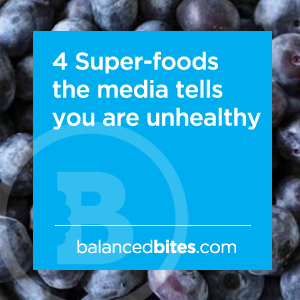 If you’re looking for a post about acai or gogi berries, keep moving, because this isn’t it. These super-foods are all from animals. Yes, animals.
If you’re looking for a post about acai or gogi berries, keep moving, because this isn’t it. These super-foods are all from animals. Yes, animals.
If you were to leave me off somewhere on an island with either only plants or animals to eat for my survival, do you want to guess which I would choose?
Here’s a hint: it would be the most nutrient-dense food available.
I’d like to note that this post is intended as a quick snapshot view of some of the amazing health benefits of foods that are commonly demonized in mainstream media. This is not my end-all-be-all post on why we should eat these foods, nor should it serve as an ultimate explanation of why they aren’t to be feared.


1. Eggs – whole eggs, especially the yolks.
Did you know that eating cholesterol doesn’t actually raise the cholesterol levels in your blood much at all?
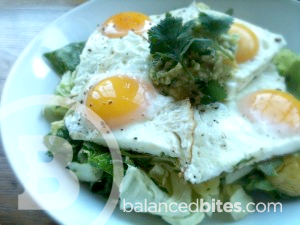 Shocking, perhaps, but true.
Shocking, perhaps, but true.
According to Uffe Ravnskov, author of The Cholesterol Myths, Ignore the Awkward: How the cholesterol myths are kept alive, and Fat and Cholesterol are Good For You, dietary cholesterol tends to increase serum (blood) levels of cholesterol is only about one-half of one percent!
We’ve been scared away from some very essential nutrient dense foods by media and marketing hype that began circulating in 1984 when Time Magazine published an article that speculated about the effects of dietary fat and cholesterol on human health.
As it turns out, there was not sound research to support this claim, but we as a nation ran scared from one of nature’s most perfect foods!
Gary Taubes rebutted that article, and the mainstream demonization of fat in general, in his New York Times Magazine article “What if It’s All Been a Big Fat Lie?”
Did you know that cholesterol is the precursor molecule in our bodies from which all of our hormones are made?
The truth of the matter here is that eating cholesterol is not only healthy for our bodies, it’s highly recommended to promote healthy hormone balance.
What else is so great about eggs?
Eggs are rich in choline, which is critical for cell membrane integrity, nerve-to-muscle communication, and optimal liver function. Vitamin A, iron, cholesterol, riboflavin (vitamin B2), vitamin B12 and selenium are also rich in eggs. Eggs are like little a nutrient powerhouse!
Hungry for more?
I talked a lot about the fear people have about eating eggs, especially the yolks, in my post: “Can Americans trust Dr. Oz for nutrition advice: only in moderation.”
Can’t eat eggs? Check out my 15 egg-free Paleo breakfast ideas here.

2. Liver – your grandmother used to serve it regularly for good reason!
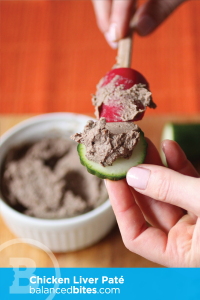 The liver is the filtering and detoxifying organ of the body, so lots of folks got the false impression that the organ itself was filled with toxins and should not be eaten. This isn’t the case! While the liver does complete these processes, toxins are excreted and not stored in the liver of animals we may eat.
The liver is the filtering and detoxifying organ of the body, so lots of folks got the false impression that the organ itself was filled with toxins and should not be eaten. This isn’t the case! While the liver does complete these processes, toxins are excreted and not stored in the liver of animals we may eat.
The truth is that liver from well-raised animals (pastured, grass-fed when appropriate, etc.) are extremely rich sources of B vitamins, vitamin A, and iron – all energizing nutrients that are essential to our health!
Hungry for more?
Check out my easy recipe for chicken liver paté here.
The Food Lovers have a great meatball recipe that you can use to hide your liver here - or their straight-up chicken liver and onions recipe here.

3. Beef – from grass-fed cows, rich in omega 3 fatty acids and CLA – the fat-burning fat!
Did you know that red meat from animals that have grazed on grass pasture for the entirety of their lives is a rich source of bioavailable (easily digested and absorbed by your body) protein, vitamin A, vitamin E, iron, zinc, omega 3 fatty acids, and conjugated linoleic acid (CLA)?
What’s more is that 100% grass-fed beef is actually leaner than it’s grain-fed counterpart, so while the fat it contains is healthy fat, the amount of fat in it tends to be much lower than that of grain-fed beef.
Farmers use grains, corn, and soy to fatten up the cattle in a speedy timeframe so that it’s less expensive to produce them. 100% grass-fed beef delivers a powerful nutrition punch with fewer calories than grain-fed – better for the cow, and better for you!
Hungry for more?
I drafted this post two weeks ago and a couple of days later Chris Kresser shared more great info with us on why red meat is healthy. Check out Chris’s post, “Red Meat: It Does a Body Good!” where he expands on some of the points I’ve made above.

4. Lard – rich in vitamin D and heat-stable, this traditional fat is a top-pick of mine for cooking and nutrients!
 According to Mary Enig, author of “Know Your Fats”, lard (fat rendered from pork) is comprised of about 50 percent monounsaturated fatty acids – the same type of fat we look for in olive oil!
According to Mary Enig, author of “Know Your Fats”, lard (fat rendered from pork) is comprised of about 50 percent monounsaturated fatty acids – the same type of fat we look for in olive oil!
What’s more, lard is also one of our richest dietary sources of vitamin D, a nutrient that’s so tough to get from food – and from climates that lack sunshine year-round – that many doctors and nutritionists today now recommend that people take it as a supplement.
The solid-at-room-temperature of lard shows us visually what the chemistry indicates: that it is also rich in saturated fats.
Once believed to have negative impacts on our health, saturated fats from natural sources – like well-raised animals and some tropical plants like coconut and palm fruit – have been exonerated time and time again and shown to in fact be much healthier for us than refined, highly processed seed-oils.
Unlike naturally occurring saturated fats, man-made seed oils are rich in polyunsaturated fats that are highly susceptible to damage – from exposure to heat, light, and air. Cooking with fats that are more saturated – more stable and less easily damaged – is always a better bet!

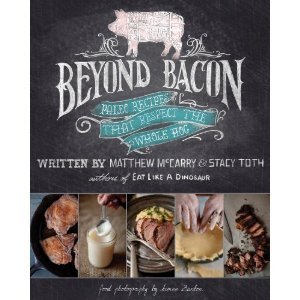 Hungry for more?
Hungry for more?My top picks for cooking fats (PDF) are: lard, tallow, coconut oil, and butter or ghee from a grass-fed animal.
Check out the great new book due out in July 2013 from Stacy Toth & Matthew McCarry (The Paleo Parents) called Beyond Bacon – it covers the many ways to cook with pork, including lots of recipes that use lard as the main cooking fat.

The bottom line here is this: as the media spews more and more information that aligns with the conventional wisdom of what is healthy to eat (low-fat foods, whole grains, lean meats and avoiding saturated fat, etc.), the importance of speaking the truths about the amazing health benefits of these traditional, real, whole foods remains critical.
If you enjoyed this article, please take a moment to share it with others via Facebook, Twitter, Pinterest or email.
March 7, 2013
Podcast Episode #77: No thyroid, eyesight, female face hair & gym challenges

Remember – If you’re enjoying these podcasts, please leave us a review in iTunes. Thanks!
Episode #77: No thyroid, eyesight, female face hair & gym challenges
Topics
1. Paleo benefits and recommendations when you are without a thyroid [12:00]
2. Using nutrition to improve eyesight [20:13]
3. How to eat and exercises to maintain weight? [30:08]
4. Hair loss and facial hair, help! [36:48]
5. Ideas on how to run a successful nutrition challenge [45:25]
Links:
Free Balanced Bites 30 Day Paleo Challenge helpful guide (PDF)
Free Balanced Bites 25-Page Nutrition Guide
Click here to download this episode as an MP3.
The episodes are currently available in iTunes, Stitcher & Blog Talk Radio.
1. Paleo benefits and recommendations when you are without a thyroid
Gina says,
My husband does not have a thyroid (thyroid cancer will do that to you – back in 2005) and we are doing some research into what type of diet would be best for his health. We are not paleo at all, but try to reduce grain intake, and I am lactose intolerant so milk products are rare in our house. Though we do have locally made goat cheese and the occasional cheddar. Can you explain the benefits of paleo diet or recommend nutrition advice in regards to his health? While his thyroid levels are regulated well with a prescription drugs and he eats pretty healthy in general, he has gained some weight in the last couple years that we aren’t understanding why. We both work out about 3x week (swimming, lifting weights, running), walk to work every day (about 2 miles), and are active (golf, hiking, trail running, etc) every weekend.
2. Using nutrition to improve eyesight
June says,
Hi Diane and Liz, I’m hoping you might have some info about Paleo and eyesight. Specifically, improving eyesight. I’m 60 yo, been paleo for over a year. I’ve worn glasses since I was about 40. Bifocals. Plus I had acute closed angle glaucoma about 15 years ago in my left eye which left my optic nerve damaged in my left eye and my left pupil permanently dialated. That hasn’t changed, though my eye pressure remains steady now w/ no meds and I have regular check ups w/ my opthalmologist. All that to say…I’m very aware of my less then perfect eyesight. I’ve noticed in the past few months that some days my eyes just seem way too blurry….comes and goes and doesn’t SEEM to be connected to sleep or computer (but maybe it is)….Yesterday I went for a thorough eye exam and my perscription has changed so minutely that they didn’t recommend new glasses plus they said my eyes looked fine. So….I’m thinking about food. I’m pretty strict Paleo except for occasional bouts w/ sugar (yes, I do the 21 dsd on and off). For supplements I take fermented cod liver oil almost daily…thank you for that recommendation, Vit. D, a good quality multi and that’s about it. I did one round of paleologix and need to order more. It really helped w/ cravings and some digestive issues I was having…but that’s another topic…
So, do you have any suggestions or info on eye health w/ Paleo and/or adding other supplements?
Thanks again for all you both do. I hope you come to the SF Bay area for a work shop some time. Diane I met you briefly when you had your book signing….want more!!!
I’m workiing on sleeping more…I get up at 6 most weekdays, do CrossFit 3 days per week. I try to get at least 7-8 hours of sleep per night, but sometimes it’s closer to 7 then 8…which is better then I had been doing in the past. I teach Pilates and do massage therapy for my living so am pretty active during the day…ie: I do not sit at a computer all day, but definitely spend too many late hours on Facebook or various website, e-mail etc. in the evenings. I am about 99% paleo. Occasionally having cream in my coffee, butter to cook with, and Paleo sweet treats which I try my best to stay away from.
3. How to eat and exercises to maintain weight?
Jenna says,
Does your body get to a certain weight where hormones change (decreased appetite, more energy) and cause weight to drop easier? I think I’ve reached that point, and I don’t want to eat when I’m not hungry, increase my carb (insulin) levels, or decrease my exercise in order to maintain my weight.
I have been subscribing to a paleo lifestyle for about 8 months. Breakfast can include, eggs in coconut oil, avocado, bacon, fruit with almond butter depending on the day. Snack on almonds/cashews and dried berries/banana chips. Lunch and dinner are typically organic chicken, grass fed beef, eggs, or wild caught fish – roasted or sauteed veg or salad – and some type of potato or rice if my activity levels have been high that day. I walk to/from work (1 miles each way) and go to the gym about 3 times a week (after work). I have always have always been “fit,” a runner since high school and never needed to lose weight. Now, I will run occasionally if the weather is nice, but it’s more of an experiential activity rather than a necessity. I weight train 2 times a week, bike an hour (heart rate 105-120) about 3 times a week. I go through spurts with yoga practice. I walk to and from work (about 1 mile each way) 5 days a week. Over the last 3 years have fluctuated between about 121 and 137 (I’m 5’7″). When I get below 125 I find that my appetite starts to get more suppressed and my energy is overflowing. Anywhere below 125 my family and friends start making comments that I’m getting too thin. Currently I’m at 125 and can feel my body starting to get into that mode. I like the way I feel with a Paleo lifestyle, but don’t want to lose anymore body fat and am on the verge of feeling bony. I carry most fat in my butt and hips. Have you heard of other people noticing this change at a certain point? Do you recommend I decrease exercise (though I feel I need it to wind down after work), or change what I’m eating to maintain my current state?
4. Hair loss and facial hair, help!
Arielle says,
Hi Ladies! Thank you so much for your awesome, in many cases, life saving podcast and books! I’m spreading the love all throughout my family thanks to your approachable delivery of information. Here’s my question: What am I missing here? I have PCOS and am really battling the androgenic tendencies of hair loss and facial hair…hell, hair everywhere! lol I put a new meaning to eating cavegirl!
I have followed a paleo diet strictly for 6 months, other than 2 days in december. I have read PCOS unlocked and took the recoomendations of taking milk thistle and saw palmetto but I’m still a hairy mama and it hasn’t decreased at all. what else can I do?? is this just one of those wait it out things?
Very intense (heavy) weight training one or two days a week only and I walk outside slowly with my 10 month old for stress relief. I am a recovering marathoner 
food varies, always paleo, but is usually three eggs and a veggie shake in the morning (veggie shake includes kale, spinach, chia seed, coconut water, carrots, ginger, lemon, lime, cucumber, frozen strawberries), lunch is usually a big salad with a grassfed pattie on it or another left over piece of meat from dinner, with balsamic vinegar, olive oil, and avocado, dinner is usually either chicken sausage sans preservatives, or chicken breast with roasted veggies and some sweet potatoes. Lots of coconut oil, butter, and animal fat used in cooking. Sometimes I snack on raw nuts and fruit. Sleep is poor usually. I co-sleep with my 10 month old and he wakes up a few times a night still. I’m a full time working mom so I often burn the candle staying up after he goes to bed to work on a few things in order to leave work early a little during the day to spend some more time with my baby boy. I’m pretty unhappy with my work situation too so could the stress of that be holding me back from getting rid of these androgenic tendencies? I’m desperate…no woman wants to have to shave her face!
5. How to run a successful nutrition challenge
Eric says,
Hello Diane and Liz, First off, thank you both so much for the Podcast, It’s informative and hilarious, Diane I love Practical Paleo and Liz I can’t wait for your book to come out. Now for my question(s). I began writing articles on nutrition for the gym I go to here in Rochester about a year ago and sort of became the “nutrition guide” for its members. I have no formal qualifications but I am a nerd, so I guess that’s how it happened. Anyway, the owner and I had always emphasized how important it is to dial in your eating habits, especially for members of our type of gym (we do kettle bell, Met-Con, Oly lifting and Crossfit style workouts). I have heard Liz mention, on a few occasions, that she has run 30 day paleo challenges, so I thought this might be a great way to get everyone who has been hesitant to try giving paleo a shot. My question then is, what the heck is a 30 day paleo challenge? How do I go about setting this up? How do you track the participants?
If you’ve run a few already, what have you found that works and what doesn’t? I typed up a sign-up sheet that essentially says, pay attention to what you put into your body for thirty days, stick to a strict paleo diet, I provided a little blank table for people to document when they eat non-paleo foods and what led them to doing so (as an attempt to get people to avoid putting themselves into those situations in the future) and I put something in there that is along the lines of supporting each other and having each other’s backs outside of the gym the same way we do inside. This might not be a great podcast question, but I’m not certain if I’ve ever heard you two discuss how you go about getting people to try out a paleo approach, the Robb Wolf try it for 30 days approach worked for me, but I’m trying to get other people on board. Thanks again for all the help, high five!
Click here to submit questions.
Cheers!
Diane & Liz
March 1, 2013
5 Questions with Mira & Jayson Calton authors of Rich Food Poor Food – and a giveaway!
Hey everyone- if you haven’t yet had a chance to tune in to Episode #75 of the Balanced Bites Podcast, I highly recommend that you do so! I interviewed Mira and Jayson about their new book on that show for over an hour – it was a great conversation! There’s so much to learn about the quality of our food, and the Caltons make it easy to understand and navigate – check out that episode here. – Diane

1. Can you give our readers a brief explanation of the meaning behind the title “Rich Food Poor Food” and how the idea for this book came about?

Well, first and foremost RICH FOOD does NOT mean expensive food! For those who read our first book Naked Calories they will remember our Rich Food, Poor Food philosophy, which we first introduced there.
Simply stated the Rich Food, Poor Food philosophy advocates eating an abundance of micronutrient (vitamin, mineral & essential fatty acids) RICH FOODS and avoiding micronutrient POOR FOODs as the first step in our three step approach to achieving micronutrient sufficiency and eventually optimal health. However, while many people adopted our philosophy we got tons of emails and texts asking us how to find RICH FOODS outside of the obvious choices like grass-fed beef or local, organic produce.
They wanted to know how to identify RICH FOODS in the rice aisle, the cereal aisle, the snack aisle and even the ice cream aisle so we decided to write a book that would be the ultimate Grocery Purchasing System (GPS) a literal GPS that helps consumes shop smarter and safer in the modern grocery store.
2. I love the idea of the GPS! Most of us are told to just shop the outer perimeter of the grocery store – does the GPS also help us navigate the inner aisles well?

While we do start off on the perimeter of the store, the RICH FOOD, POOR FOOD GPS also guides consumers down every aisle of the grocery store from dairy to desserts helping them identify the most micronutrient RICH FOODS.
But it doesn’t stop there, we also up the ante on food quality and help them avoid over 150 potentially dangerous POOR FOOD ingredients that are often hiding in our modern foods – such as pesticides, hormones, GMOs and numerous other ingredients banned in other countries. We set the book up in aisles instead of chapters and we cover 9 aisles commonly found in most grocery stores – Dairy, Meat, Fish & Seafood, Produce, Condiments, Grains, Baking, Snacks, and Beverages… in that order.
3. Can Rich Food, Poor Food be a helpful tool for those of us who shop at the local farmers market or co-op?
Absolutely, in fact many times in the book we guide readers outside the grocery store and directly to local farms, farmers markets or co-op’s in their areas to find the freshest, most micronutrient-packed RICH FOODS. To be honest we buy very little from our grocery stores anymore. But all of the information on grass-fed meats, wild-caught fish, pastured chickens and eggs, raw/organic dairy and local/organic produce, and even what questions to ask your local supermarkets or farmers will be relevant to readers whether they are shopping at Walmart or their local farmers market. For example most people have no idea that the U.S. grows more that 25,000 acres of genetically modified zucchini and crock neck squash (yellow zucchini) or that 86% of all corn is GMO – ask your local farmer if his/her corn and zucchini are from a non-genetically modified seeds. Some farmers at local markets we have been to can’t answer these questions. (tip: organic is always from non-GMO seed)
4. Budget is always a big concern when people first make the transition healthier food. What advice would you give to a family on a tight budget?
First, that we understand what it is like to live on a budget that never seems to have enough room to include the foods we know are healthier for us. Do your best!

If you are on a tight budget we urge you to completely re-think what you are buying. If grass-fed beef is not in the budget, go for line-caught, wild tuna in BPA free cans. If pastured organic chicken is out of reach opt for pastured organic eggs instead or if you are going to buy conventional chicken opt for the white meat, leaner cuts will contain fewer toxins, as toxins are more concentrated in the animals fat (tip from page 98 RFPF).
And don’t beat yourself up if your grocery list still has a few POOR FOOD items left on it. Nobody is perfect, the point is to make small changes and stick with them. Remember saying no to POOR FOODs at the movies, or sporting events is another way to save money and enhance your health.
We also did something else that had never been done before. We went to the RICH FOOD manufactures and asked for coupons for their foods and many of them came to the table. In our RICH FOOD Resource Center at CaltonNutrition.com we offer readers access to these exclusive RICH FOOD coupons to help bring down the cost of healthier foods. In addition, we are also offering our Limited Edition RICH FOOD, POOR FOOD shopping tote for FREE (a small shipping charge applies). It has the Fab 14 and Terrible 20 right on it (a guide that tells you which produce is safe to buy conventionally and save money on due to low pesticide residue and which you should buy organic due to high pesticide residue and high likelihood of genetic modification), it also has on one side a list of POOR FOOD ingredients you never want to see on an ingredient list. We really are doing everything we can to help make RICH FOOD affordable to everyone.
5. What are the top three mistakes consumers make when trying to shop healthy?
1. Thinking that REAL food is automatically a RICH FOOD
On the cover of our book RICH FOOD, POOR FOOD we are holding an apple and a carton of eggs, both of which are real foods, but it is impossible to tell just by looking at them if they are RICH FOODS or POOR FOODS. Just because a food is real it does not mean it is a RICH FOOD.
The apple could be a conventional POOR FOOD apple grown in micronutrient depleted, toxic fertilizer laden soil, picked prematurely (before it has had a chance to properly develop its optimal vitamin and mineral content) sprayed with 42 different pesticides (the amount the USDA pesticide data program states is commonly spayed on U.S grown apples) and shipped 1726 miles (the average distance the USDA states an apple travels to reach your table) across the county loosing the vitamin and minerals it does have every minute of every mile it travels due to its exposure to heat, light and air.
Or it could be a RICH FOOD apple— picked just seconds ago from our backyard tree that was organically grown and pesticide free.
The same thing goes for the carton of eggs, they could be POOR FOOD eggs laid by a hen who was kept in an unnatural environment, and fed a consistent diet of genetically modified corn and soy OR they could be RICH FOOD eggs laid just minutes before the photo, by a chicken that was allowed to wander free in a pasture to hunt and peck in the dirt for grass and bugs and bask in natural sunlight everyday to increase the vitamin D levels of its eggs and fed a supplemental portion of non-GMO grain.
As you can see the quality of these visually identical real foods are vastly different - don’t assume that just because a food is real that it is automatically a RICH FOOD.

2. Thinking sugar is okay to include in their diet.
Okay, before your readers get upset and start throwing things at us, let us state that a rare treat that contains sugar is okay, but we include it as our #2 most common mistake most healthy consumers make because most consumers do not understand that sugar as a part of a regular diet will have addictive metabolic reactions.
Research has shown that sugar is as addictive as cocaine. Additionally, sugar competes with vitamin C for entry into your cells, drastically decreasing your body’s ability to mount a strong immune system. Sugar also stimulates the secretion of insulin, our fat storage hormone and overconsumption of sugary foods can lead to insulin resistance and type 2 diabetes. Sugar is also an Everyday Micronutrient Depleter (EMD) in that it has had all of the minerals needed by the body to metabolize itself stripped away and so it must use your stash to be metabolized and in doing so causes you to use up your essential micronutrients at a quickened pace increasing the likelihood of becoming deficient especially in the minerals copper and chromium.
If that is not enough sugar blocks the absorption of calcium and magnesium two minerals which interestingly enough when deficient cause us to have a physical craving for salty and sweet foods. When you eat these salty and sweet foods those foods through a series of reactions we go over in Naked Calories (pg. 182 The Crave Cycle) cause us to become further depleted in these very minerals, which in turn intensifies the craving and the cycle becomes like a dog chasing its tail. Lastly – its just not a good idea to eat sugar and fat together. The body is designed to use one or the other as an energy source. When we eat high quantities of both at the same time this can spell dieting disaster. Fat is essential and sugar is not so getting rid of the sugar is the obvious choice.
3. Thinking that wheat, especially whole wheat, is healthy.
Why this may not apply so much to your low carb/paleo/primal followers for the vast majority of health conscious consumers wheat, and especially whole wheat, is still the holly grail of healthy food. In RICH FOOD, POOR FOOD we have a whole aisle dedicated to grain and we explain in detail exactly what is wrong with wheat and how it makes us fat and sick. If you have a friend or a loved one who is still wolfing down the wheat thinking they are eating a healthy diet, the grain chapter may help change their mind without you having to go into your “why you should eat paleo” diatribe for the 20th time. Every RICH FOOD selection in RICH FOOD, POOR FOOD is wheat free – the pasta, bread, snacks, everything. So your friend or family member will be so focused on finding the RICH FOOD choices we steer them to in each aisle that they won’t even notice they are all wheat free.
Thank you to the Balanced Bites Team!
We want to say a special thank you to the Balanced Bites Team, for taking the time to talk to us and your readers for taking the time to learn a little bit about RICH FOOD, POOR FOOD. We truly feel that no matter how dialed in you are with your diet (or how new you are to the whole healthy eating arena) that RICH FOOD, POOR FOOD will bring something new to the table and really bring the issue of food quality front and center. We hope everyone will grab a copy of RICH FOOD, POOR FOOD, read it themselves, share it with friends and family and help us make the RICH FOOD Revolution a reality.
On a final note we just want to remind everyone that money talks – make sure yours is saying what you want it to say each time you buy a product in your local grocery store or farmers market. And please find some time to come explore our new RCH FOOD Resource Center at CaltonNutrition.com.
The grand opening is on February 26th and in it you will find exclusive RICH FOOD coupons, RICH FOOD Request lists to bring with you to the grocery store if your store is not currently carrying the brands you want, a downloadable wallet sized version of our Fab14 & Terrible 20 lists and our Limited Edition RICH FOOD, POOR FOOD Shopping Tote (FREE – just pay a small shipping charge) and tons more.
We can’t wait to hear what you think about RICH FOOD, POOR FOOD - drop us a line and let us know about your personal RICH FOOD shopping experience!
Check out just one of the many media appearances Mira & Jayson have had explaining POOR FOOD ingredients here:

TO ENTER THE “RICH FOOD POOR FOOD” BOOK GIVEAWAY:
1. “Like” The Caltons on Facebook.
2. Follow The Caltons on Twitter.
3. Comment here letting us know you’ve completed one or both of the above, and tell us why you want a copy of ! If you’ve already ordered a copy, tell us who you’d give a second copy away to and why.
NOTE: Only one comment per person will count as an entry. Posting more than one comment will disqualify you from the contest, so please just post once! Thanks!
That’s it! No purchase necessary.
Note: This contest will be open for entries until 5pm Eastern on Tuesday, March 5th, 2013. One winner will be selected using random.org and emailed and announced here on the blog. If you do reply to the winning announcement email to claim your prize within 48 hours of the announcement, a new winner will be selected in your place.
February 28, 2013
Podcast Episode #76: JJ Virgin talks about “The Virgin Diet”

Remember – If you’re enjoying these podcasts, please leave us a review in iTunes. Thanks!
Episode #76: JJ Virgin talks about “The Virgin Diet”
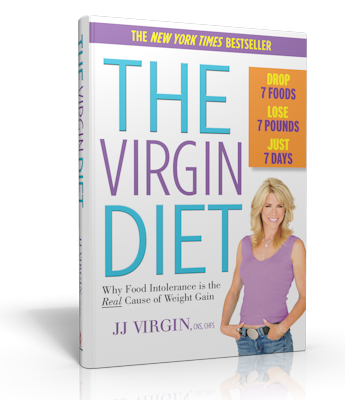 In this episode we had chat with
The Virgin Diet
author JJ Virgin about her new book and so much more! Liz and I immediately exclaimed to one another how much we loved JJ after this call – you don’t want to miss it!
In this episode we had chat with
The Virgin Diet
author JJ Virgin about her new book and so much more! Liz and I immediately exclaimed to one another how much we loved JJ after this call – you don’t want to miss it!We covered some great topics including:
All about JJ and her book the Virgin Diet [5:37]
Allergy food testing [11:43]
Leaky Gut and the moderation myth [14:35]
The 21 day sweet spot [24:15]
Making food quality and healing foods easy [30:53]
Using fat for fuel [36:40]
Calories in Calories out myth [40:08]
Tips to manage stress in extreme circumstances [44:32]
Click here to download this episode as an MP3.
The episodes are currently available in iTunes, Stitcher & Blog Talk Radio.

Click here to submit questions.
Cheers!
Diane & Liz
February 26, 2013
Easy Recipe: Buffalo Chicken Egg Muffins

This recipe will be included in my new book The 21-Day Sugar Detox: Bust Sugar & Carb Cravings Naturally, releasing in October 2013!

buffalo chicken egg muffins
Pack an extra protein punch into your morning with these savory egg muffins!
grain-free • gluten-free • dairy-free • nut-free • seed-free • sugar-free • 21DSD
 PREP TIME: 10 minutes
PREP TIME: 10 minutes
COOKING TIME: 60 minutes
YIELD: 6 egg muffins (2-3 servings)
NUTRITION INFO: coming soon!
Ingredients:
For the chicken:
3/4 lb boneless, skinless chicken thighs (or breast)
1/2 tsp garlic powder
sea salt & black pepper to taste
1/4 c Tessemae’s Wing Sauce (or use 2 tablespoons of a clean-ingredient hot sauce* + 2 tablespoons melted butter or coconut oil)
6 large eggs, whisked
2 tablespoons green onion/scallion, sliced
sea salt & black pepper to taste
2 tablespoons of Tessemae’s Wing Sauce (or use 1.5 teaspoons of a clean-ingredient hot sauce* + 1.5 teaspoons melted butter or coconut oil)
Preparation:
Preheat the oven to 425.
On a baking pan, arrange the chicken thighs and season with garlic, sea salt, and black pepper. Bake for 25 minutes or until cooked through.
Place the cooked chicken thighs into a large mixing bowl and shred with two forks. Pour the wing sauce over the chicken and toss to combine and set it aside.
In a small mixing bowl, whisk the eggs, wing sauce, green onion, sea salt, and black pepper.
Pour the egg mixture into parchment cup lined (these are the only type of liners I recommend as nothing sticks to them, guaranteed!) muffin tins to fill them approximately halfway. Gently spoon about 2oz of the shredded chicken into each muffin cup so that it’s evenly distributed. Serve any extra chicken alongside the cooked muffins.
Bake for approximately 30 minutes or until the muffins rise and become golden brown around the edges.
*My favorite organic gluten free hot sauce is from Arizona Gunslinger - chipotle habañero!
Yes, you can enjoy this recipe while on the 21-Day Sugar Detox!

Note: I earn a small commission if you use the links in this post to purchase the products mentioned. I only recommend products I would use myself or that I recommend for clients in my practice or at workshops. Your purchase helps support my work in bringing you real information about nutrition and health.
February 25, 2013
Monday Motivation: Does your desire for security keep you from your calling?

I’ve written about this concept before in my post Are You Driving Your Life or Is Your Life Driving You?, but today I have a bit of a different message for you.
Do you feel like you are answering your calling in life?
This is a big question, I realize that.
But here’s the thing: your calling doesn’t need to mean some final, end-all-be-all career or type of work that you’re doing. It can be a “for now” or a circumstantial thing. It can be an interim, on-your-way, getting you to that next stage thing. The journey – or the path you take to fulfilling what it is that you are called to do – that’s what I’m talking about.
Do you awaken in the morning with a burning passion to do whatever it is you have lined up for the day?

Yes? Great! That means you’re on the right track. Perhaps you are building a business, taking care of your kids, work at a job where you are excited and motivated every single day to achieve more, help more people, etc. Whatever this looks like for you – fantastic – keep doing it!
No? Hold up… why not? What is it that keeps you from acknowledging that this is it. This is your life – your shot to do what you want to do, day in and day out, and love it.
I know there are things that come up, tasks, responsibilities, etcetera, that we can’t avoid. I’m not talking about those things. I’m talking about making a conscious effort to choose what it is you will be doing every day.
Choose to do something that you feel is like a force of gravity pulling you into it – and you can’t deny the force.
I was making a six-figure salary at the last job I had before I decided to quit, make $0 and pursue my calling. I knew I needed to help people to learn how to be healthier, but the first time I tried it was with a meal delivery business, and it wasn’t the path for me. It wasn’t my calling to be doing the work for others. I simply wasn’t thinking big enough.
I am a teacher. I am a leader. And I have a burning desire to help others to live healthier lives by making better choices every day.
I could not deny that I was waking up every day with this passion but I was punching a clock at a job where I was pushing pixels around on a screen, surrounded by people who did not share my passion for health and wellness at all. I didn’t want to choose that environment or that career any longer.
I have a feeling a lot of folks out there are living a life that’s expected of them.
Perhaps its parental expectation – to become something or fulfill some requirements they have of you of becoming an adult. Many people are expected to move through life in an order, and without that order, that checklist of completed life-rituals, success isn’t there. You graduate college, get a job, move out, get married, buy a house, have kids, a dog, perhaps even a white picket fence?
Or maybe it’s that the people you are surrounded by are all doing what you’re doing – and maybe you even all complain about it to one another?
Maybe you just never considered an alternative? Maybe that thing you have this inner excitement about – or think you might be really good at if you tried – it just seems too scary to pursue. It seems like it should be a hobby, not a career, because you (and everyone around you) think it’s sort of crazy to be someone who does that (gasp!) for a living!
There is absolutely a risk involved when you step even one toe off of the beaten path, explore the unexpected, or create a life that scares not only yourself, but others around you.
 Fear is a terribly demotivating force. I’ve seen so many people become paralyzed simply by thinking about all of the things at which they might fail in trying to take a risk, make a change, and live a different life.
Fear is a terribly demotivating force. I’ve seen so many people become paralyzed simply by thinking about all of the things at which they might fail in trying to take a risk, make a change, and live a different life.
Don’t get me wrong, what I’m asking you to do isn’t easy. It can be the scariest thing in the world to come face to face with the reality of hard work – and the demands that come with answering your calling.
But guess what? It’s the most rewarding thing in the world – spiritually, emotionally, and, eventually, financially. This doesn’t mean that every person who follows his or her calling makes tons of money – but it means that the success and satisfaction you find in the daily life you’ve created begins to add up to more than any dollar amount ever could.
What good is a big paycheck when you hate what you need to do every day to get it?
If you spend 40+ hours a week to earn this money, then what? You live for the weekends when you get to finally do what you want to do? I just can’t fathom this life. If this is you right now – stop and make a plan. It doesn’t mean you need to quit your job, but you sure as heck had better evaluate what it is you want to be doing.
I tend to think living up to expectations others set for us leads to a life that is paradoxically successful.
 You have the money, the car, the spouse, kids, house, fancy cable tv, etc… but are you happy? Are you truly happy? Why don’t more people view joy in everyday life as a measure of success?!
You have the money, the car, the spouse, kids, house, fancy cable tv, etc… but are you happy? Are you truly happy? Why don’t more people view joy in everyday life as a measure of success?!
So many people think that somehow things will improve, their feelings of success or joy or fulfillment will increase if they simply stay the course and continue to achieve and reap financial rewards of this path.
But if an alternate path is never considered, how do you know? I have no questions or doubts for those who are on whatever path they’re on if they say “I’m happy, content, and I feel I’m doing what it is I’m here to do in this world – in this life – to the best of my ability.” If you don’t feel this way – a chance in choice is necessary.
Do it now.
 I wrote about creating a hedgehog here. Read that post if you feel you have a calling, but are not quite sure what to do about it. There are some clear cut action steps to take. I realize that many folks think to themselves “sure, I have a passion for this thing I think I should do, but I can’t just up and drop all of my responsibilities to pursue it.”
I wrote about creating a hedgehog here. Read that post if you feel you have a calling, but are not quite sure what to do about it. There are some clear cut action steps to take. I realize that many folks think to themselves “sure, I have a passion for this thing I think I should do, but I can’t just up and drop all of my responsibilities to pursue it.”
I’m not saying to stop paying your mortgage in order to pursue your calling in life.
What I am saying that you sure as heck should be making a plan for how to pay your mortgage while pursing it. You have to.

Have you taken a risk and answered your calling?
Tell me about it in the comments below.
Diane Sanfilippo's Blog
- Diane Sanfilippo's profile
- 52 followers


